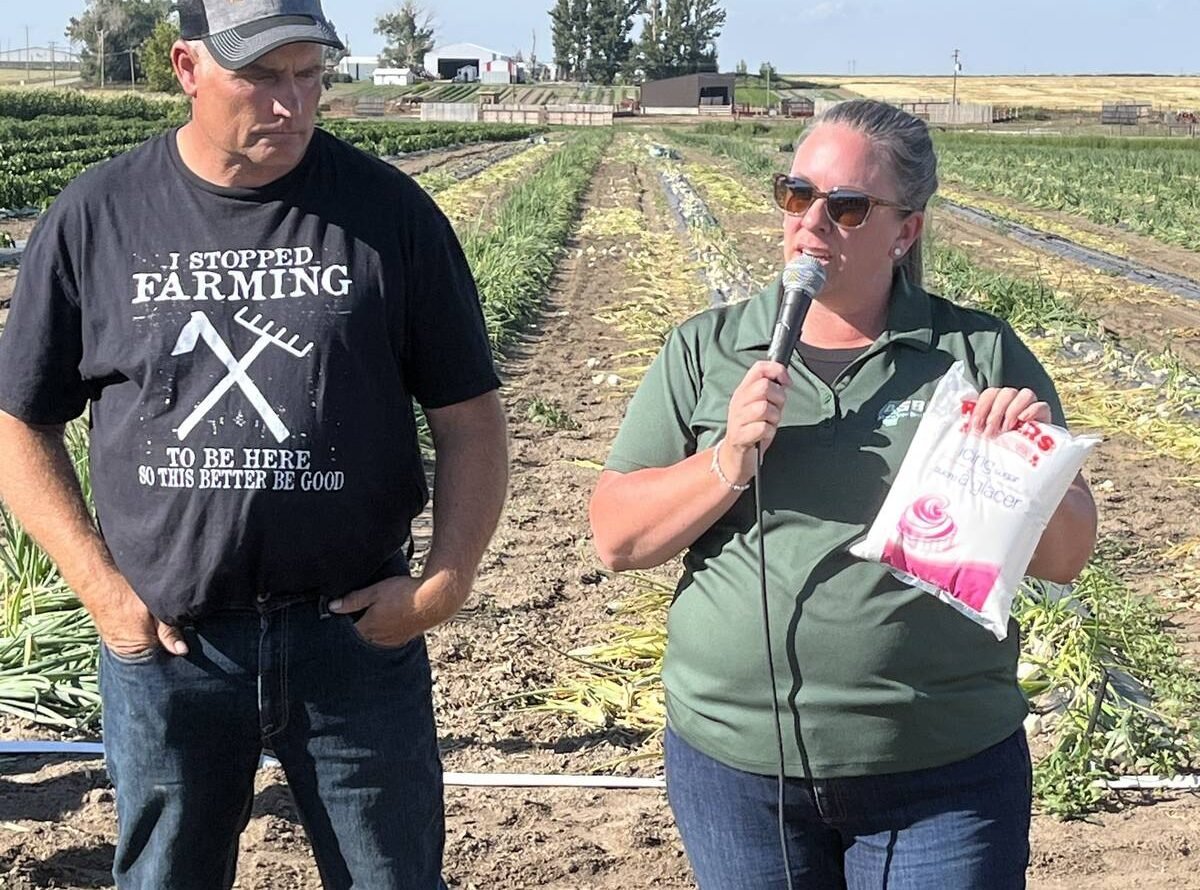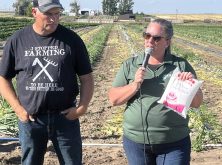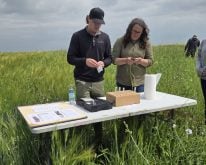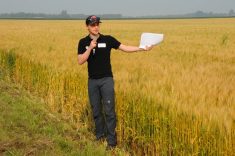Research scientists at Michigan State University have modelled the impact of potentially hotter, dryer weather on key crops such as corn.
In the 2021-2022 production year, the United States was the biggest corn producer worldwide.
The research focused on the fungi Aspergillus flavus and Aspergillus parasiticus, both of which produce aflatoxins that can infect peanuts, tree nuts and corn. Aflatoxin is a class of toxic compounds that generate certain moulds in food, causing health problems for humans and animals depending on exposure.
Read Also

Alberta’s beets a sweet domestic segment in Canada’s sugar supply
The sugar beet industry is showcased during a Farm to Table tour, as Taber features the last remaining sugar beet processing plant in all of Canada.
Health conditions triggered by aflatoxin can include nausea, vomiting, abdominal pain and convulsions and cancer.
“Aflatoxin is the most potent naturally occurring liver carcinogen known,” said Felicia Wu, an international expert on food safety in the agriculture department at MSU.
“Around the world, it causes between 25,200 and 155,000 liver cancer cases in humans per year. In North America, we have food safety standards that largely keep aflatoxin out of food, but this may become more difficult as the climate warms in the near future.”
Hot, dry conditions encourage fungi spores to become airborne, increasing their expansion and their chances of contaminating crops across wider growing regions.
“Most of the current aflatoxin problem is in corn grown in the southern states,” said Wu. “However, our predictive near-term climate model for aflatoxin risk in U.S. corn shows that, in the years from 2031 to 2040, the risk of aflatoxin will spread northward and start to affect the Midwestern states including the Corn Belt states where much of the corn is grown for U.S. and global consumption and use.”
She said the Corn Belt has experienced several warmer than usual summers.
“In 2012, the Midwest, particularly Iowa, Illinois and Indiana, had a hot and dry summer that saw aflatoxin levels rising in corn. One of our earlier studies estimated an aflatoxin-related loss of over $1 billion that year.”
She added that different fungi prefer different climates and cool-weather fungi may become less prevalent in warmer regions. One such cool-climate fungi is Fusarium sporotrichioides which produces the mycotoxins T-2 and HT-2 that can lead to mould in whole grains. When ingested, it can cause clinical conditions affecting the skin, airway and stomach.
“The fungi that produce aflatoxin may gain a wider hold across the U.S.,” said Wu. “[However] it may take a while for these fungi to become problematic in Canada.”
Controlling the potential problem as the climate warms includes irrigation. Water helps plants withstand stresses that make them vulnerable to dangerous fungi. But that, in itself, may be problematic given dropping water tables and the risk of depletion of water reserves.
For storage, Wu says that growers, grain elevator operators and processors can reduce the risk of aflatoxin contamination by storing grain harvests in cool, dry conditions. A longer-term solution will include continued development of drought-tolerant crops.
“One of our earlier studies showed that Bt corn planting results in significantly lower aflatoxin risk because transgenic Bt corn is modified to produce insecticides in the kernels and/or roots,” she said.
“Insects damage corn kernels in a way that allows fungi to colonize more easily and produce mycotoxins. By reducing insect damage, Bt corn also reduces the risk of fungal infection and subsequent mycotoxin production.”
Researchers are already using biotechnological and conventional breeding techniques to develop hybrid crops able to withstand drought, insect damage and fungal infections.
Another potential control is to shift crop production further north, where it is cooler, or to regions where it may be wetter to reduce aflatoxin risk. However, it was noted in the media release that a shift away from traditional production regions may impact farms and farming families who have been corn producers for generations.
There is considerable pressure to maintain or increase yields to feed a growing global population while adjusting to and coping with the challenges of climate change.
While Wu believes it may be a while before aflatoxin becomes a problem for Canadian corn farmers, the Prairies are recognized as becoming a geographic hot spot in the face of climate change.
Prairie summers are projected to become warmer and drier with warmer and wetter winters and springs. Forecasts are expected to be more variable and less predictable at critical growing and harvest times.
Wu’s team plans to continue to explore mitigation strategies to combat the threat of aflatoxin, including biotechnology solutions.
The research was published recently in the journal Environmental Research Letters.















